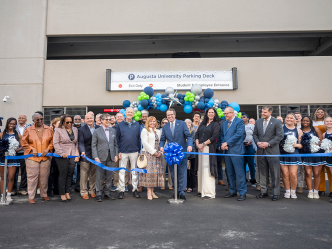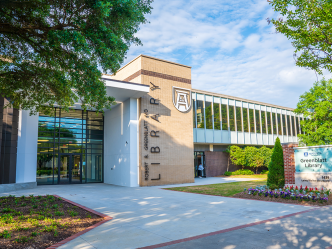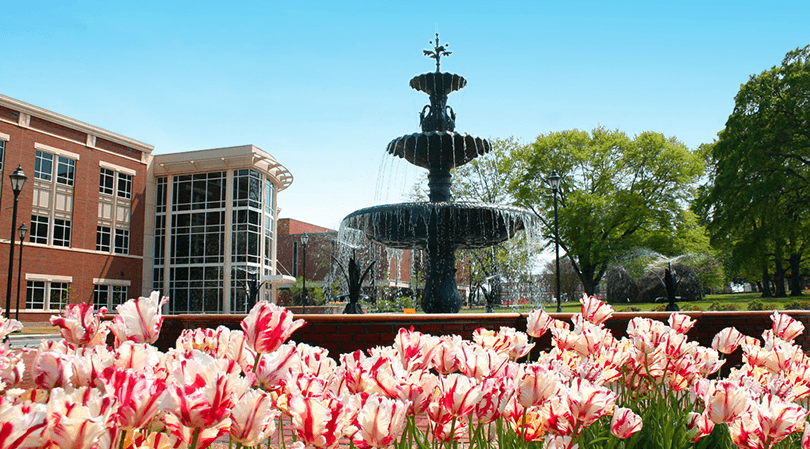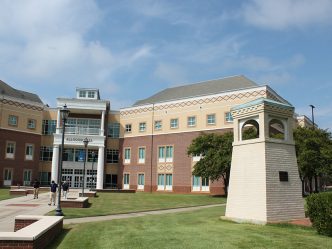
Frustrated with parking at Georgia Regents University? You’re not alone. David Santa Ana, the newly appointed director of parking and transportation, feels the same way.
Santa Ana believes that parking is the first, and last, point of contact for patients and visitors. He intends to ensure that parking becomes a non-issue for both guests and those of us who park at GRU every day.
Having previously served as the associate director of parking and transportation services for the Georgia Institute of Technology, the director of parking and transportation at Georgia State University and the direct
or of parking and transportation at East Carolina University, an academic health campus, Santa Ana brings a wealth of experience to GRU.
Santa Ana was attracted to the position because he saw it as a “ground floor opportunity.” He’s looking forward to building the parking and transportation program from the ground up- as well as quickly creating something that works for the entire enterprise.
“What we get with David is a really experienced professional who’s had experience at institutions like what we are aspiring to be, and he’s going to be able to make the change that we need,” explained Karl Munschy, director of auxiliary administration.
Although Santa Ana began serving as Director of Parking and Transportation on Oct. 1, he has already hit the ground running with plans to expand parking and transportation in order to create a system that is effective. The plan is based on a two-year timeline and aims to establish consistency.
“We will establish a more consistent level of parking allocation across the board,” said Santa Ana. “A level of consistency needs to exist.”
The first step in creating consistency is to update the parking management system, which currently dates to the 1980s.
This system will improve communications between the Department of Parking and Transportation and those that utilize GRU parking. For example, the proposed system will send out emails to inform people, in advance, of lot closures and construction. The current management system is not capable of performing this service. Santa Ana also plans to implement license plate recognition software which will help ensure that people are parking in their designated areas.
The two-year timeline will not create more parking spaces but seeks to improve what currently exists. Gates will be added to some facilities, and the parking hang tag will serve as a gate key. LED lights are also being installed in some areas. This helps cut down on costs. At Georgia Tech, Sana Ana found that LED lights decreased electrical utilities by over 50 percent.
In addition to gating certain facilities, Santa Ana is also focused on ensuring the safety of those who park at GRU. He believes there are some simple things that could be done to improve the security of the parking decks on the Health Sciences Campus.
“A cleaning company could come in and do a real good cleaning of the facilities we have,” said Santa Ana. “Then, maybe look at painting some of those to create more of a lighted environment.”
These improvements to parking facilities are known as passive security. Cleaning and painting the facilities make them appear brighter and friendlier, which in turn, makes people feel safer.
However, the master plan does include creating more parking. Rest assured.
“There’s not enough parking,” said Munschy. “We know we have a deficit. We have to actively manage this and move forward. It’s going to take years. It’s not going to be an instantaneous fix.”
Students will be happy to know that, at this time, Santa Ana does not plan on raising parking fees. Rather, he’s focused on making sure that 100 percent of the people that are parking are paying for parking.
“About 40 percent of the 11,000 spaces we have are revenue generating,” said Santa Ana.
He plans to ensure that all of the parking spots are generating revenue before considering raising parking costs. One way Santa Ana plans to do this is by having a fee associated with patient and visitor parking.
“The basic premise that we’re going to operate under is that parking in university facilities is by permit only,” said Santa Ana. “How you become permitted is you have your annual permit, your temporary permit, you’re at a parking meter or you’re in a pay lot.”
Despite the challenges that parking at GRU faces, Santa Ana remains optimistic that in two years the community will see substantial improvement.
“People will able to get where they need to be and go where they need to go,” he predicts. “There will be an enhanced communication component that spans the entire campus community. People will know what’s going on without getting surprised, because when it comes to parking nobody likes surprises.”
He is also willing to listen to suggestions faculty and students may have regarding parking and transportation and hopes to ease any perception that parking at GRU exists in a vacuum.
Santa Ana’s goal is to create a model parking and transportation system. When other universities are looking to solve a problem, he envisions that they will come to GRU to find the answer.
“People hate what’s here now, but they’re going to love what’s coming,” said Santa Ana.
 Augusta University
Augusta University



